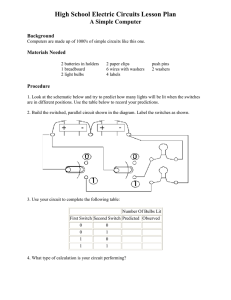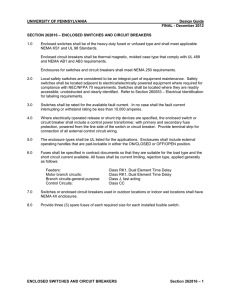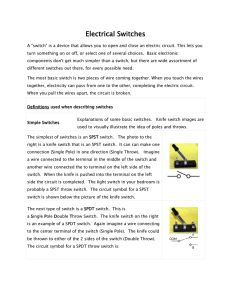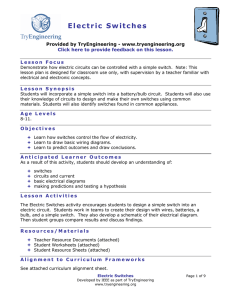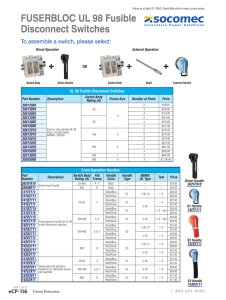Series and parallel circuits checkpoint task activity (DOC, 337KB)
advertisement
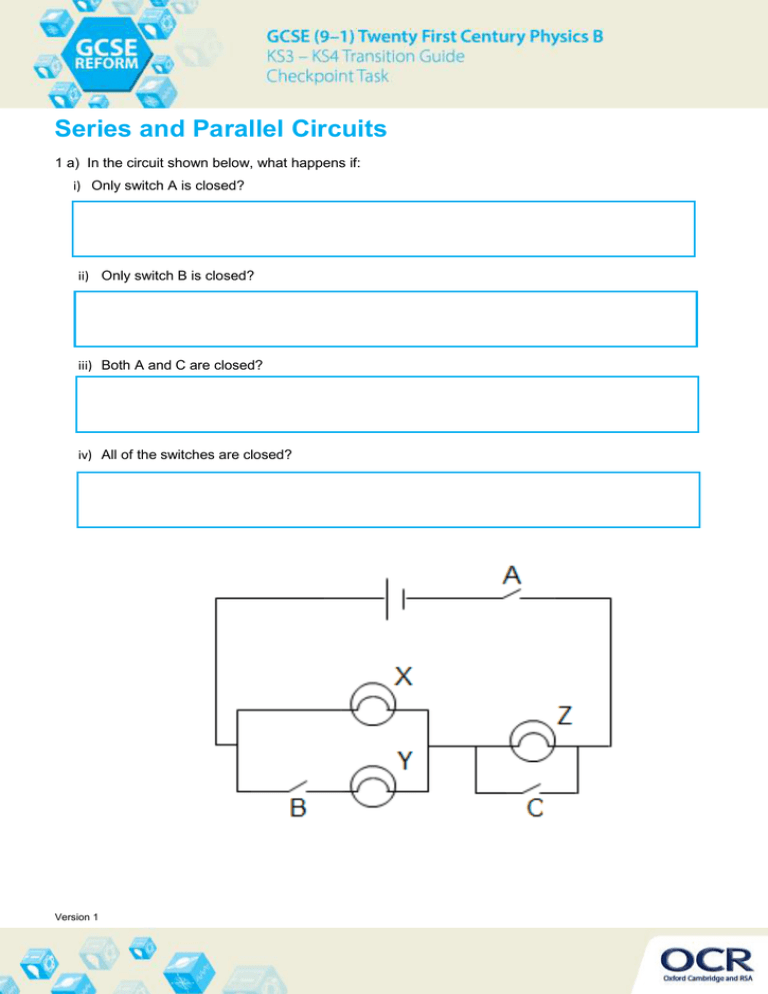
Series and Parallel Circuits 1 a) In the circuit shown below, what happens if: i) Only switch A is closed? ii) Only switch B is closed? iii) Both A and C are closed? iv) All of the switches are closed? Version 1 b) In the circuit shown below, what happens if: i) Only switch A is closed? ii) Only switch B is closed? iii) Both switches A and C are closed? iv) All of the switches are closed? Version 1 c) In the circuit shown below, what happens if: i) Only switch A is closed? ii) Only switch B is closed? iii) Both switches A, B and C are closed? iv) All of the switches are closed? Version 1 2. In these 5 circuits, all the bulbs are the same, and all the cells are the same: a) Which voltmeter will have the highest reading? Why do you think this is? b) Which circuit will have the biggest current flowing? Can you explain why? c) Starting with the highest, write down the voltmeter readings in order. d) Will the bulb with V2 across it be brighter that the bulb with V5 across it? Version 1 3. In these 4 circuits, all the bulbs are the same, and all the cells are the same: a) What is the reading on ammeter A4? b) In which circuit will the bulb(s) be brightest? c) Which ammeter has the highest reading? Can you explain why? d) Starting with the highest, write down the ammeter readings in order. Version 1 4. The diagram below shows a house with a circuit using 2-way switches. Point A can be connected to either point B or point C. This circuit is being used to turn the light on at either the front door of the house or the back door. a) How can you turn the light on? b) Explain how the circuit works. You can use letters from the diagram to help you. c) Why is this a good circuit to use for this job? Version 1
